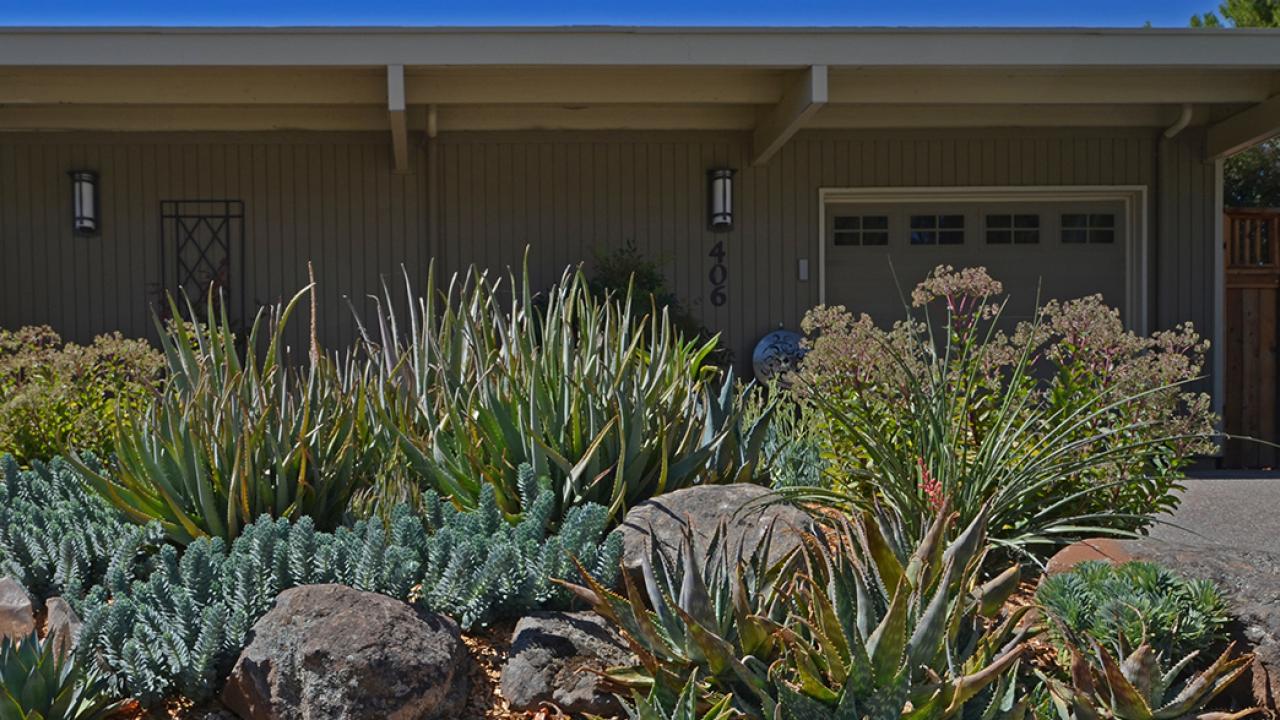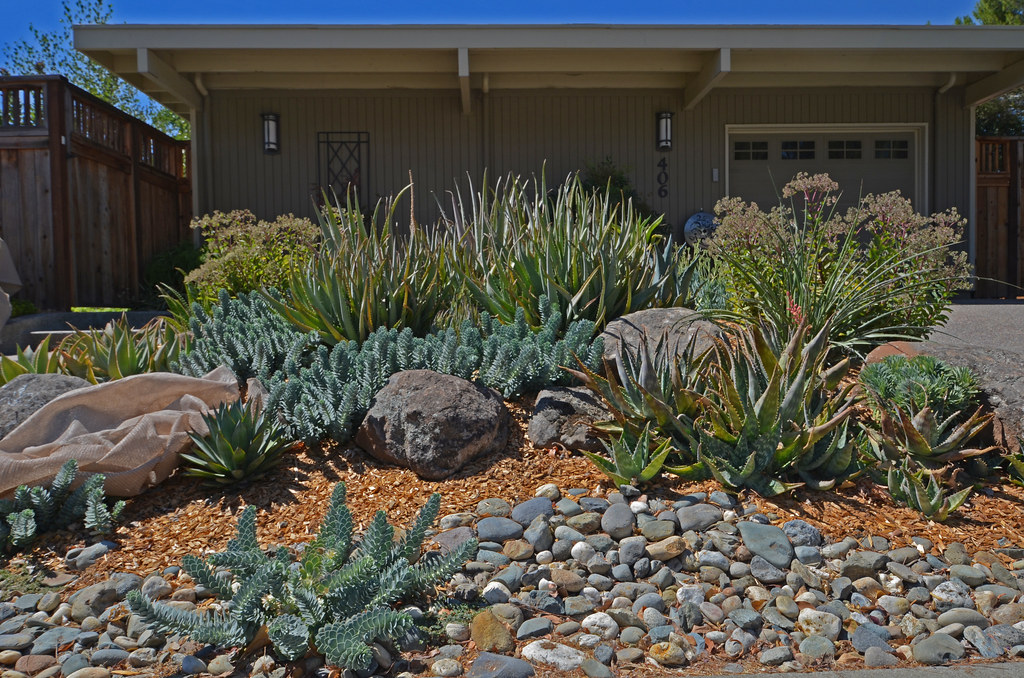
Life After Lawn Advice: Learn by Doing
Mona and Frank Demasi
Many succulents are well adapted to low-water landscapes because their thickened leaves store water, providing them the ability to survive dry, hot climates. Softer leaved succulents like Echeveria prefer shade in our region while the larger, cold-hardy Agave and Aloe species do well in full sun.
As people learn more about the unique forms and many benefits of succulents, their popularity continues to grow which is why we we were inspired to feature Frank and Mona Demasi’s front yard. Their smallish north-facing front yard resembles a rocky slope from a natural area in many dry climates of the world.
“I had no succulent experience when I started and my friend leant me some books by Debra Baldwin (succulent writer based in Los Angeles) and I started reading them and looking for ideas. I had some succulents that I had saved from a prior garden and wanted to create a very low water, waterwise garden. At first the plants looked taxed and I read that they needed regular water until established so I installed a drip system and began to water….and the plants came to life!”
South African aloes with thick fleshy leaves dominate the planting, producing candelabras of orange, red and yellow flowers frequented by hummingbirds for their nectar in early spring. Some Aloes grow like a shrub with woody stems while others like Aloe × ‘Caitlin’ makes horizontal short offsets call “pups” that spread over time to a large mass — perfect for sharing with like-minded succulent gardeners.
“I love it when the plants are in bloom, the aloes are literally alive with hummingbirds and the Sedum is active with bee visitors. Because the garden is on the north side of the house I thought it would be a cooler area but it turned out it is more north west and was quite hot in the summer. I think my next step will be to add some drought tolerant shrubs to shade the succulents and to help protect them.“

